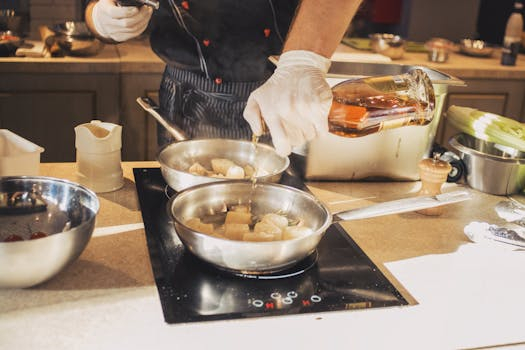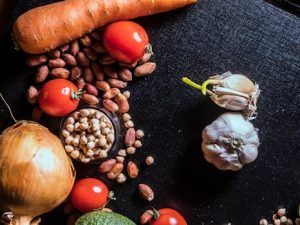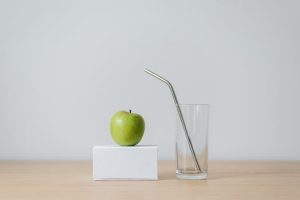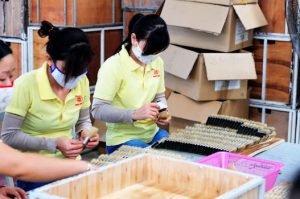Upcycling Food Waste: Turning Scraps into Gourmet Dishes
In a world where more and more people are becoming aware of the impact of food waste on our planet, the concept of upcycling has gained significant popularity. Upcycling food waste is the process of turning scraps and leftovers into delicious and gourmet dishes, reducing waste and promoting sustainability. Not only is this practice environmentally friendly, but it also allows for creativity in the kitchen and the chance to enjoy gourmet meals without breaking the bank. Let’s explore the art of upcycling food waste and discover how we can turn scraps into culinary treasures.
The Problem with Food Waste
The United Nations Food and Agriculture Organization (FAO) estimates that one-third of all food produced globally goes to waste. This equates to approximately 1.3 billion tons of food that is lost or wasted every year. Not only is this a staggering amount, but food waste also has a significant impact on the environment. The decomposition of food in landfills produces methane gas, a potent greenhouse gas, contributing to climate change. It also wastes valuable resources such as water, land, and energy used in food production.
What is Upcycling?
Upcycling is the process of taking something that would otherwise be discarded and turning it into something of higher value or quality. In the case of food waste, this means using scraps and leftovers to create new and tasty dishes. Upcycling differs from recycling, which involves breaking down materials to create new ones. Upcycling allows for the creative reuse of existing materials, reducing the need for new resources and minimizing waste.
Why Upcycling Food Waste Matters
Aside from the environmental benefits, there are several reasons why upcycling food waste is essential.
Reduces Food Insecurity
According to the World Food Programme, one in nine people does not have enough food to live a healthy and active life. By upcycling food waste, we can minimize the amount of food that goes to waste, making more food available for those in need.
Saves Money
Upcycling offers a budget-friendly alternative to constantly buying new ingredients. By using scraps and leftovers, you can create gourmet meals at a fraction of the cost. Plus, it reduces the need to constantly restock your fridge and pantry, saving you money in the long run.
Promotes Creativity in the Kitchen
Upcycling food waste requires you to think outside the box and get creative with your cooking. It’s an excellent opportunity to experiment with new flavors and combinations, making cooking more exciting and enjoyable.
How to Upcycle Food Waste: Tips and Tricks
Now that we understand the importance of upcycling food waste let’s explore some tips and tricks to help you get started.
Save Your Scraps
Start saving your vegetable scraps, such as carrot peels, onion skins, and celery ends, in a bag or container in your freezer. These scraps can be used to make flavorful vegetable broth, perfect for soups, stews, and risottos.
Get Creative with Leftovers
Don’t let your leftovers go to waste. Instead, transform them into new and delicious dishes. For example, mashed potatoes can be turned into crispy potato cakes, and leftover chicken can be shredded and used in tacos or salads.
Use the Whole Vegetable
Use the stems, leaves, and peels of vegetables, such as kale, broccoli, and beets, in your cooking. These parts are often discarded, but they are packed with nutrients and flavor. For example, beet greens can be sautéed and used in place of spinach in recipes.
Compost What You Can’t Use
Some food waste cannot be upcycled, but it can still be used for good. Consider starting a compost bin to turn your food waste into nutrient-rich soil for your garden.
Upcycling Recipes to Try
If you’re feeling inspired to upcycle your food waste, here are some simple and delicious recipes to get you started:
Roasted Vegetable Soup
This hearty and flavorful soup is perfect for using up leftover vegetables. Simply roast the vegetables, blend them with some broth, and enjoy a delicious soup.
Stuffed Bell Peppers
Use leftover rice and beans, along with any other leftover veggies, to create a delicious and colorful filling for stuffed bell peppers. Top with cheese and bake for a tasty and satisfying dish.
Banana Bread
When your bananas start to turn brown, don’t throw them away. Instead, mash them and use them to make a delicious banana bread. Add nuts or chocolate chips for an extra treat.
Conclusion
Upcycling food waste is a simple and effective way to reduce food waste, save money, and promote creativity in the kitchen. With a little planning and creativity, we can turn our scraps into gourmet dishes and make a positive impact on the environment and our communities. So let’s start upcycling and discover the endless possibilities of turning food waste into culinary treasures.











